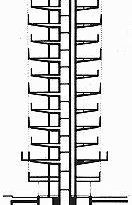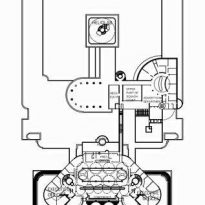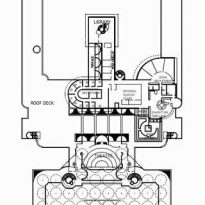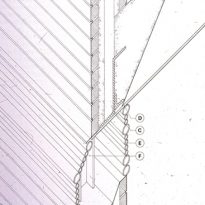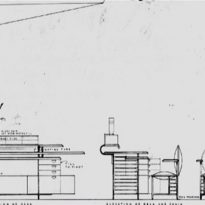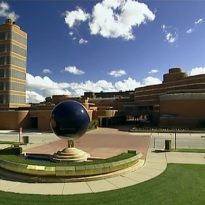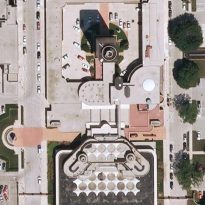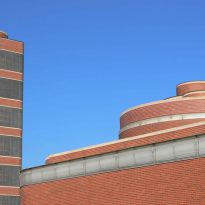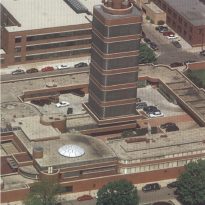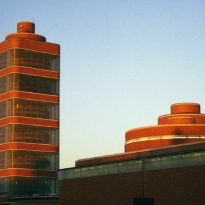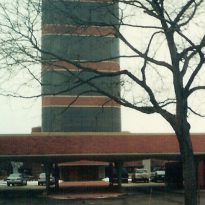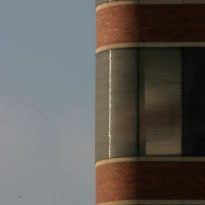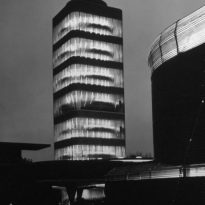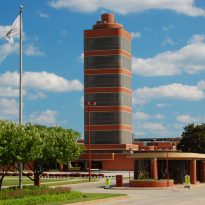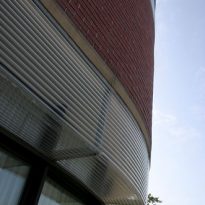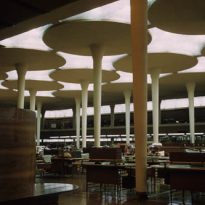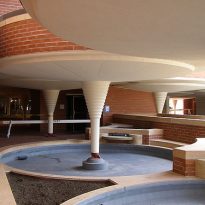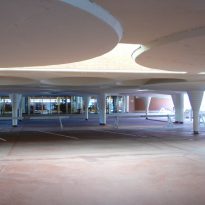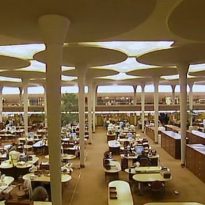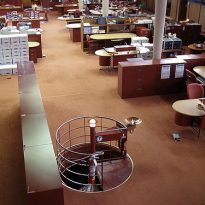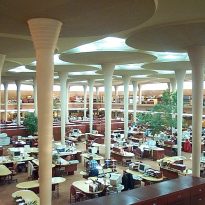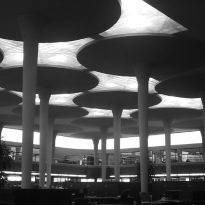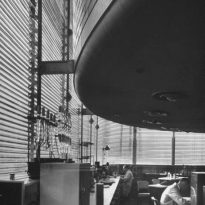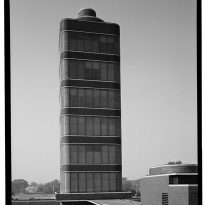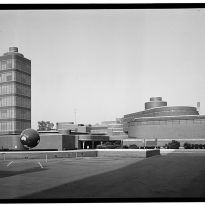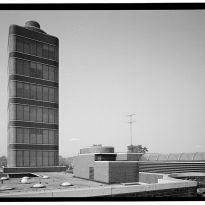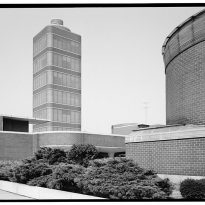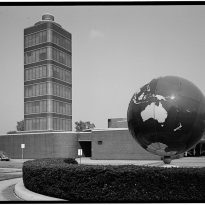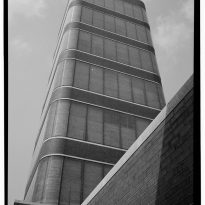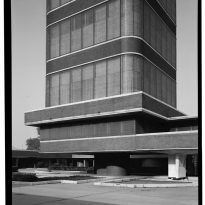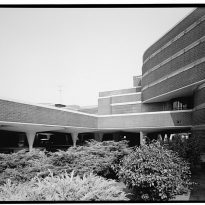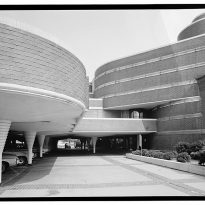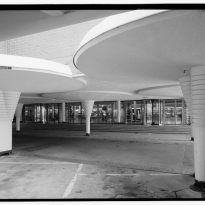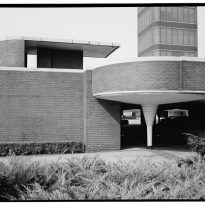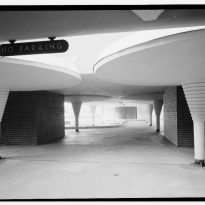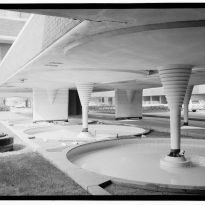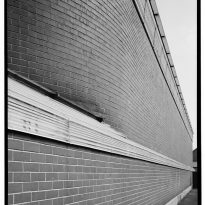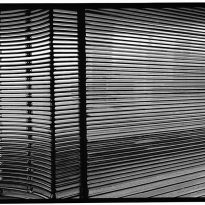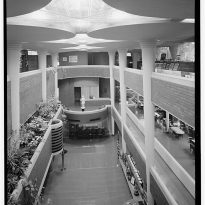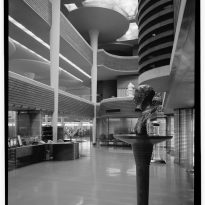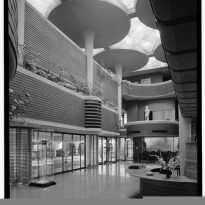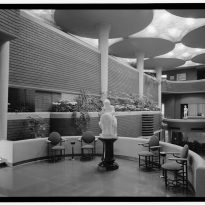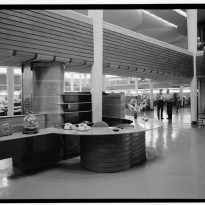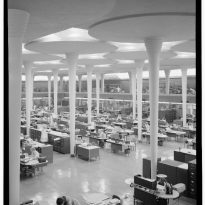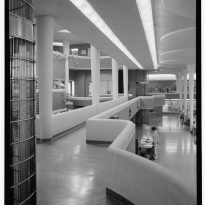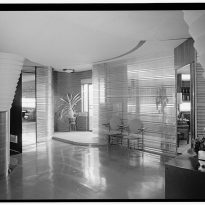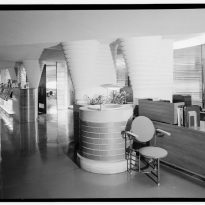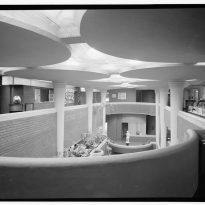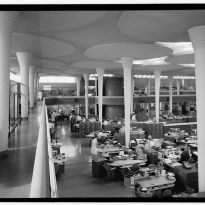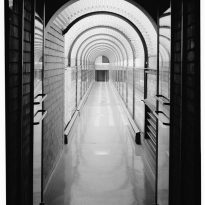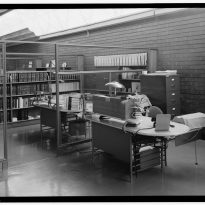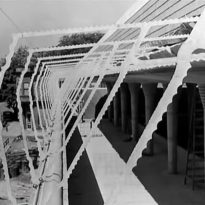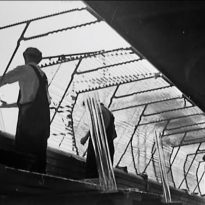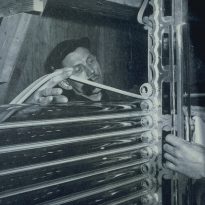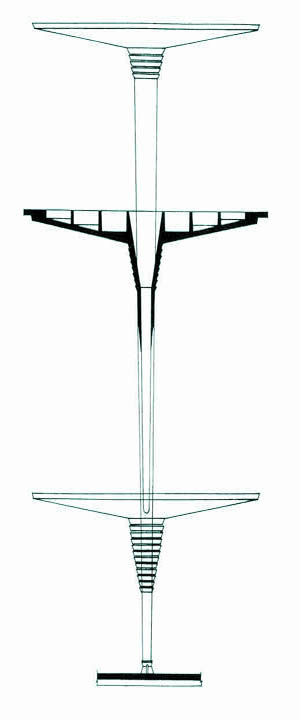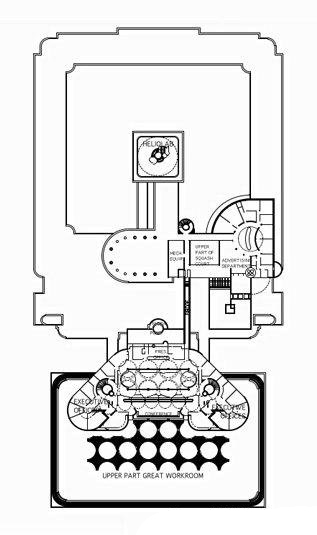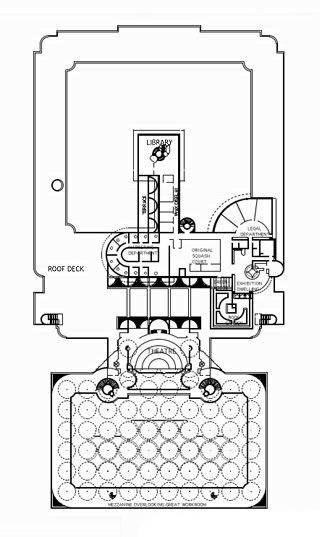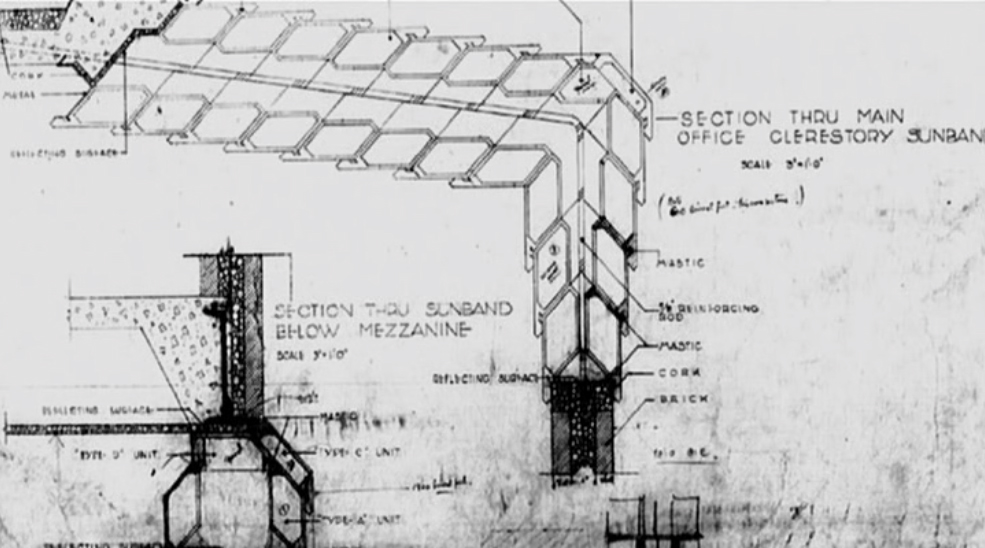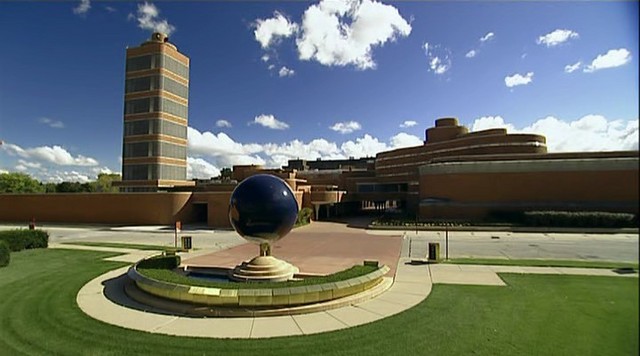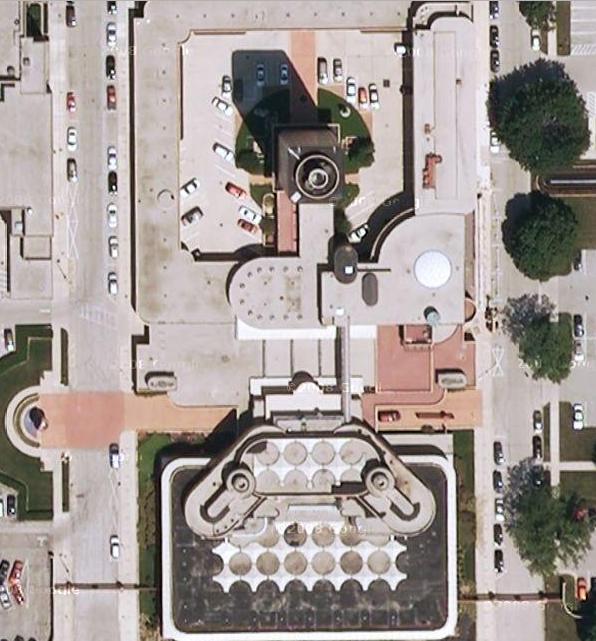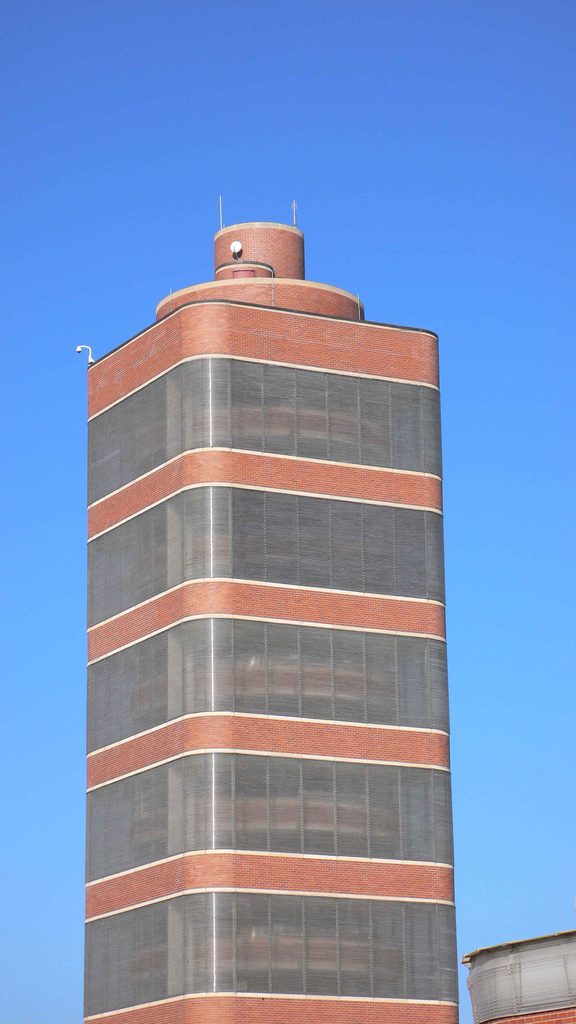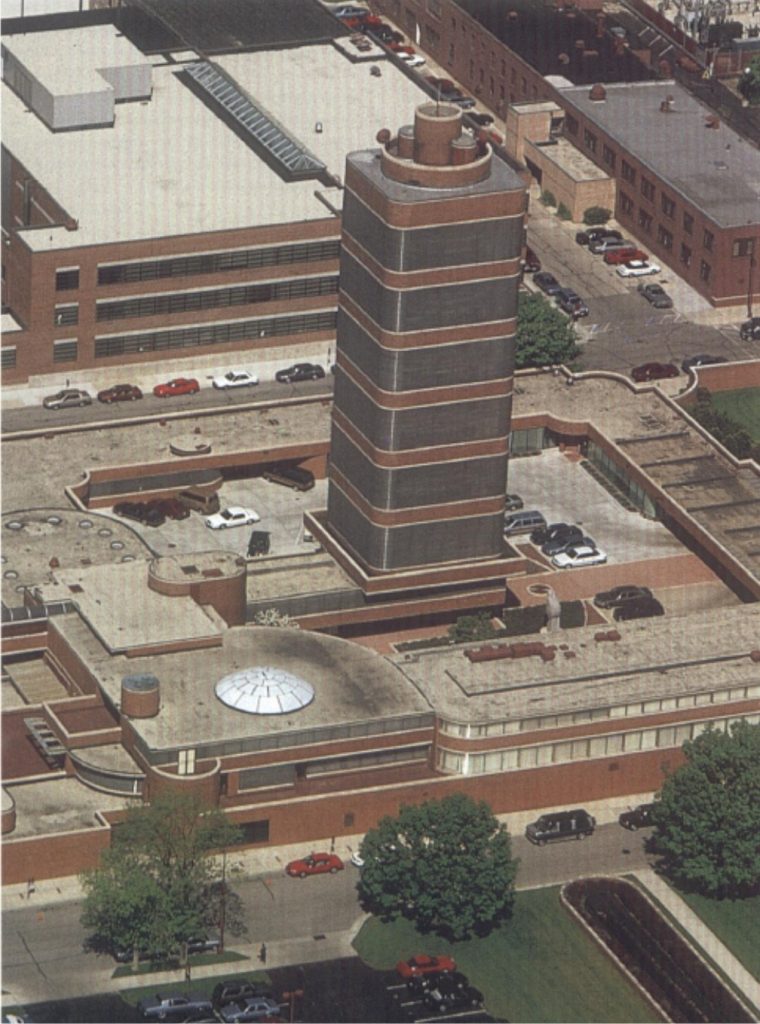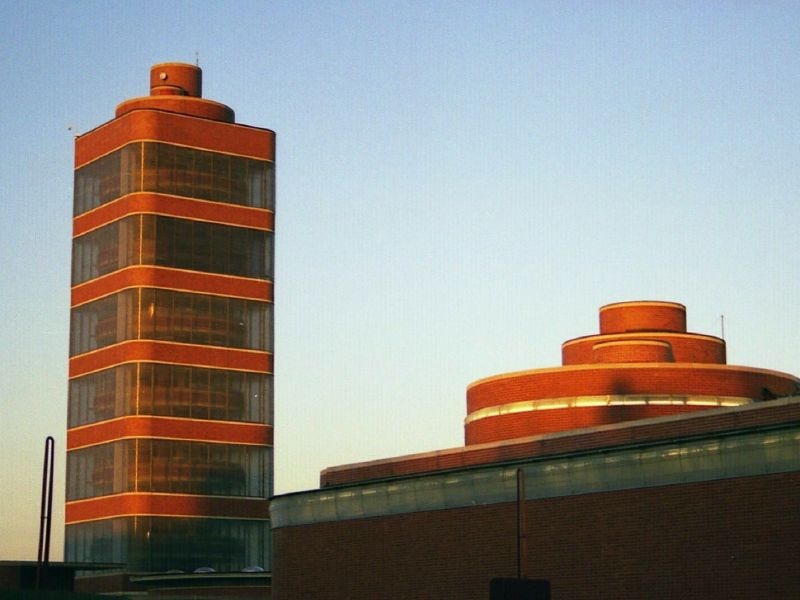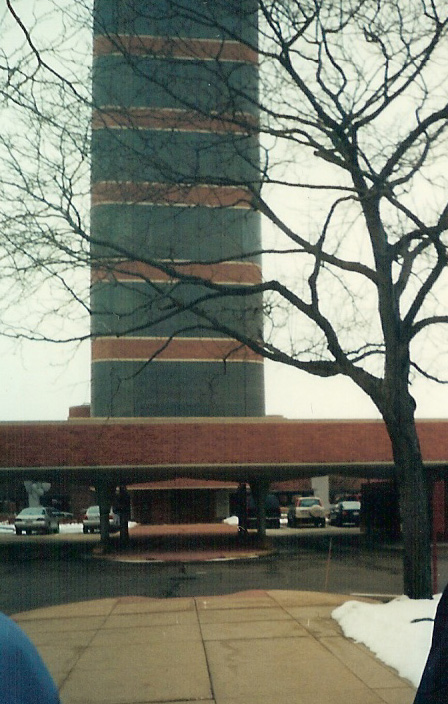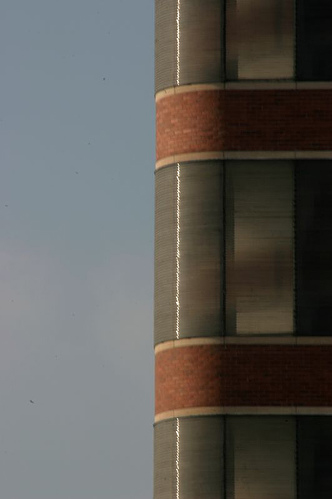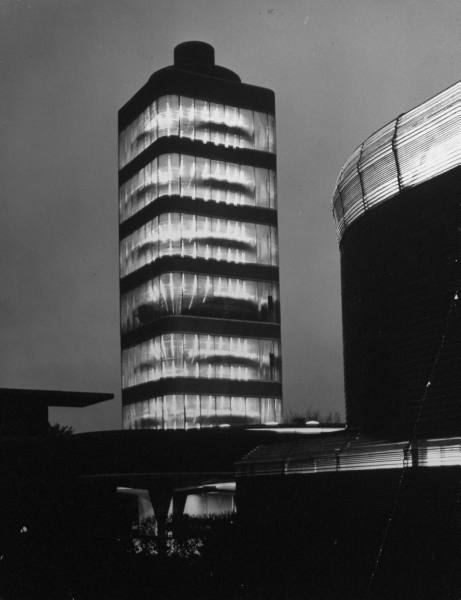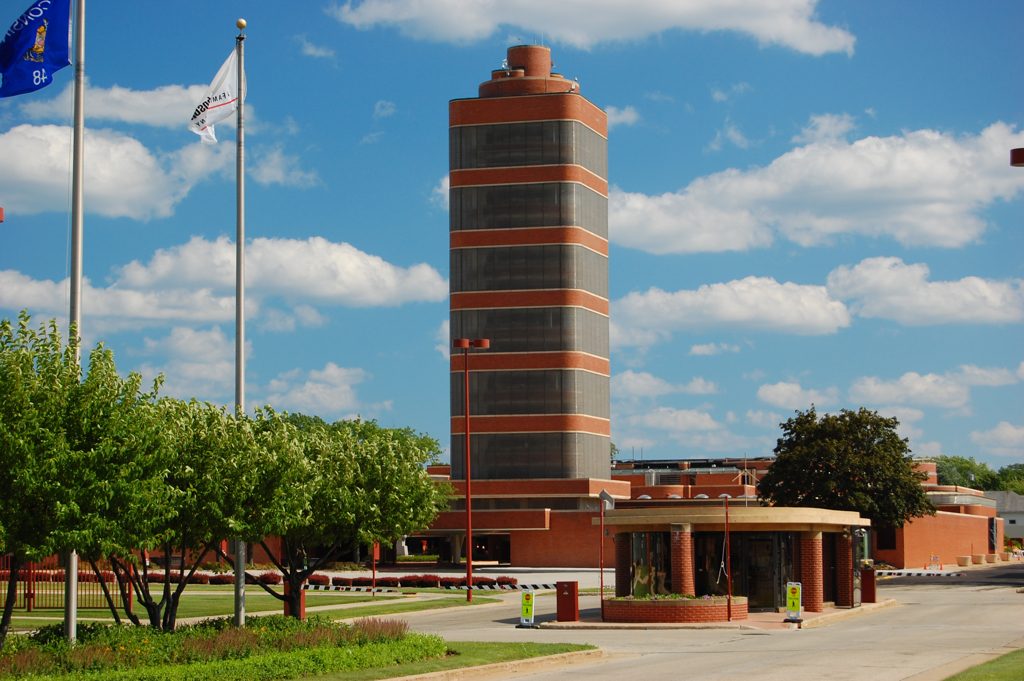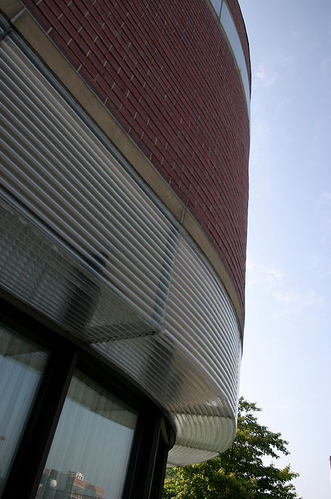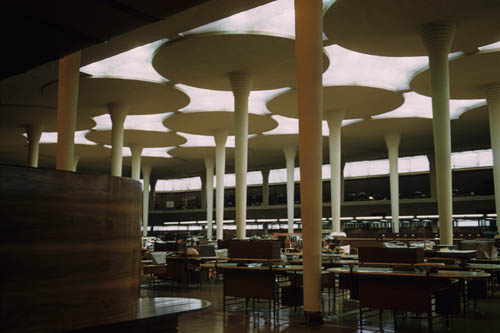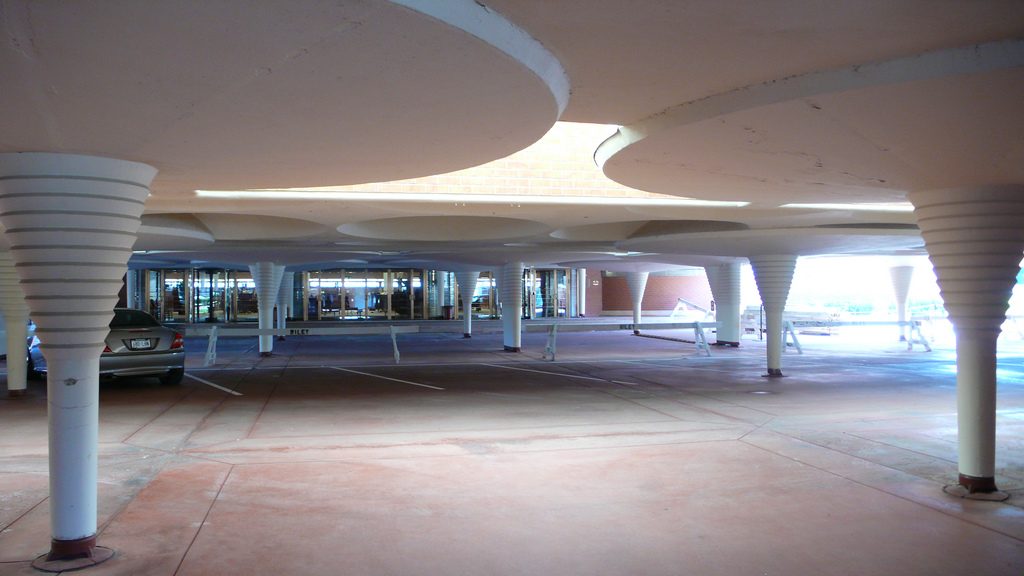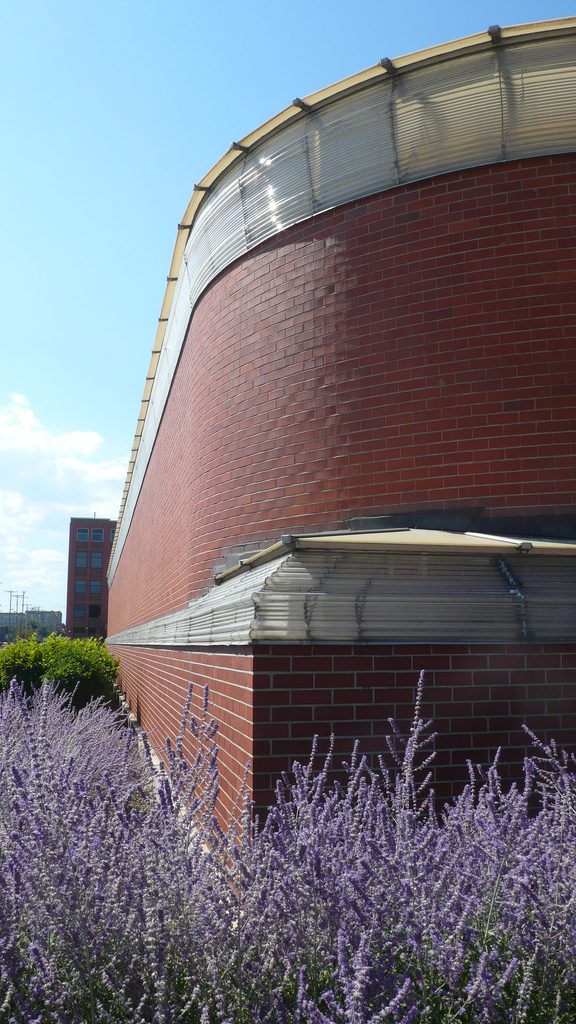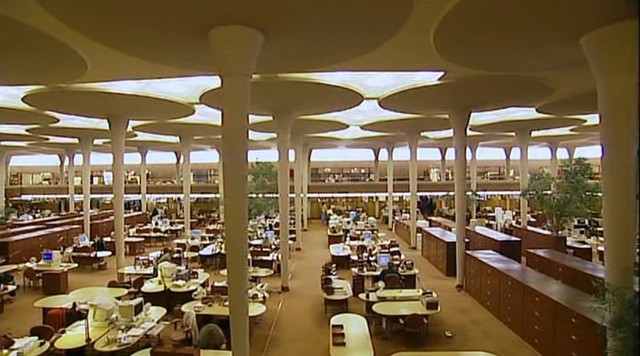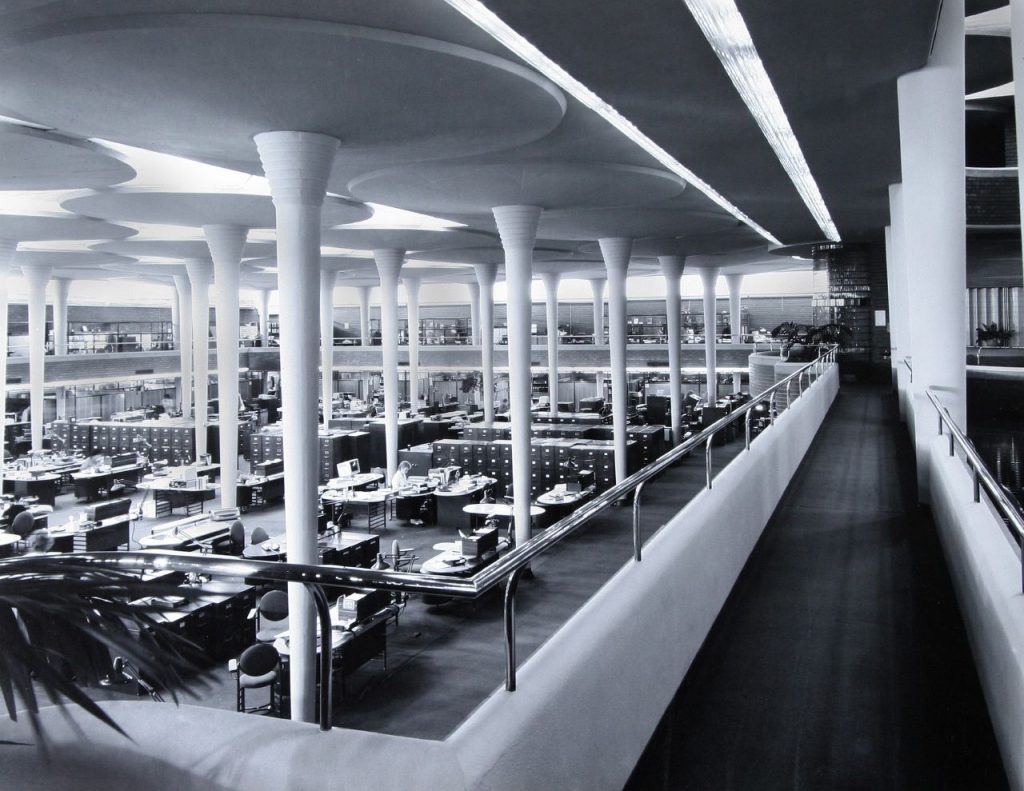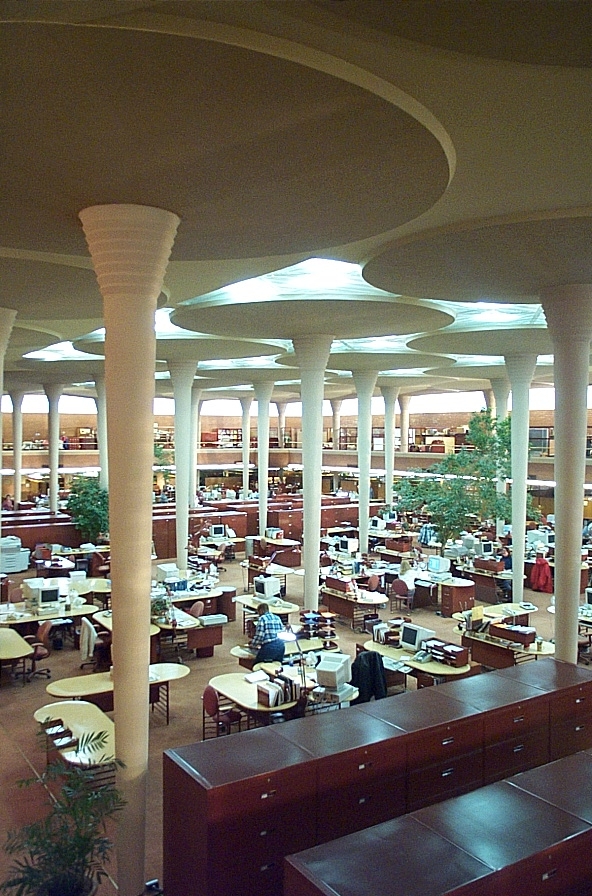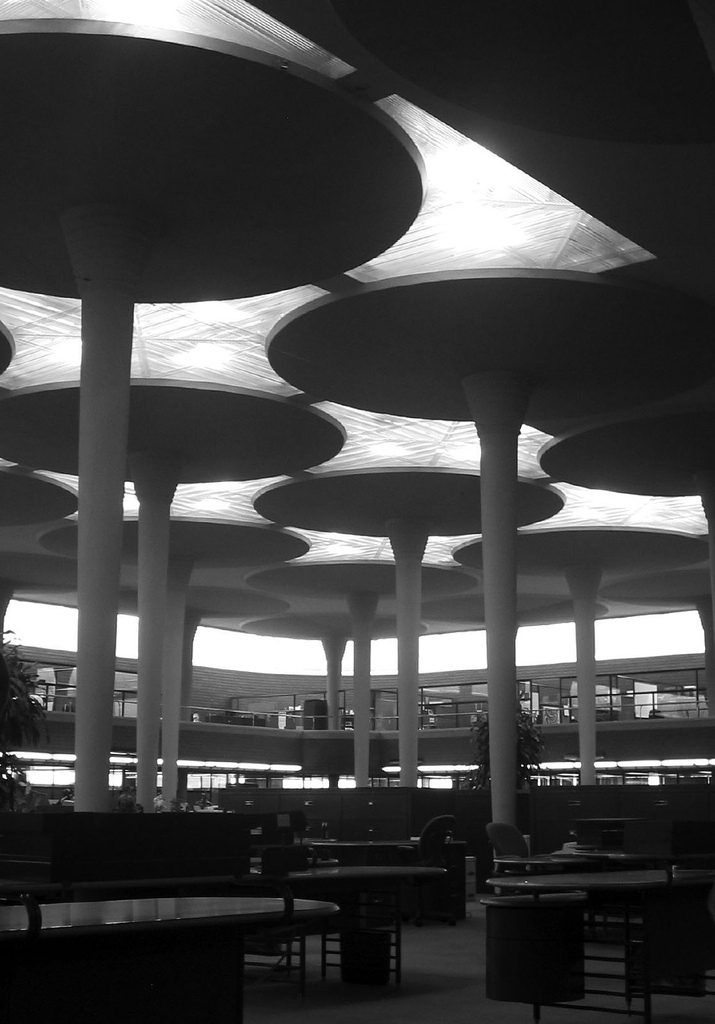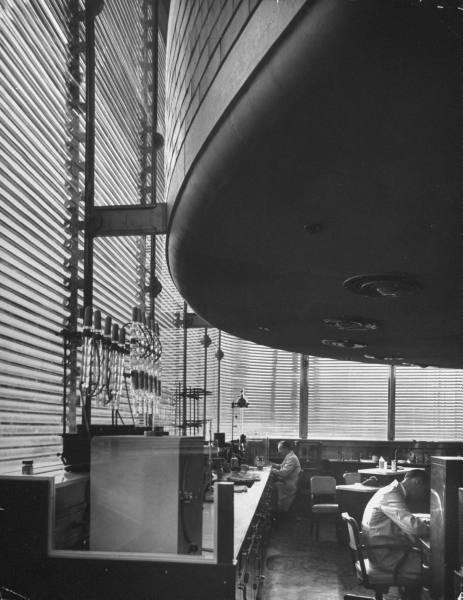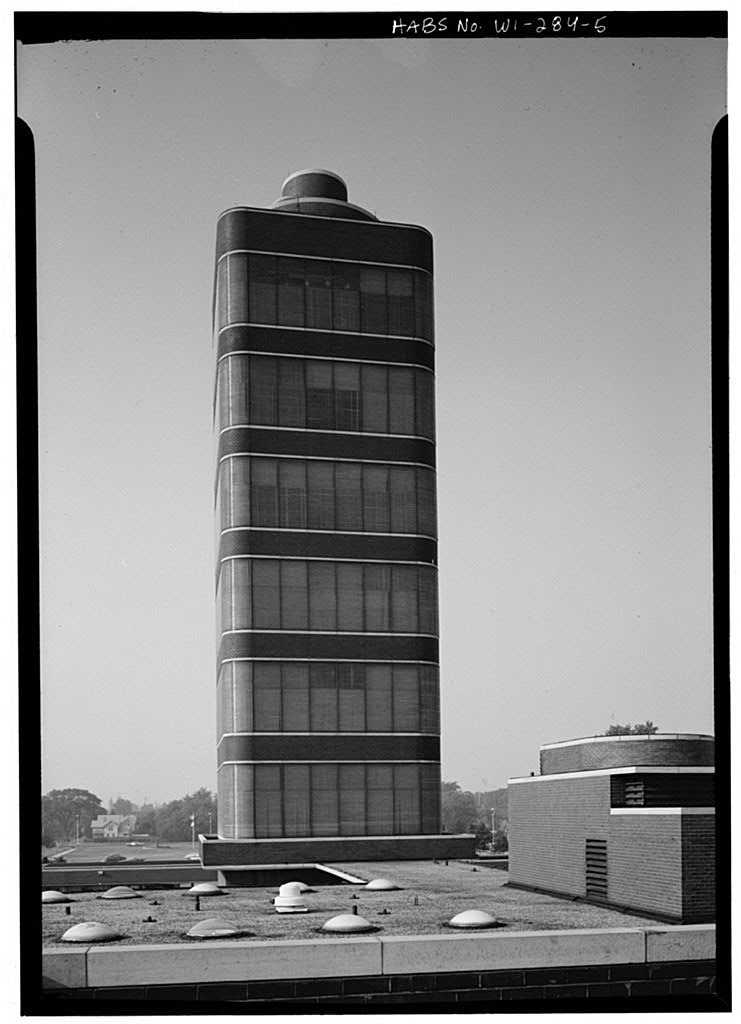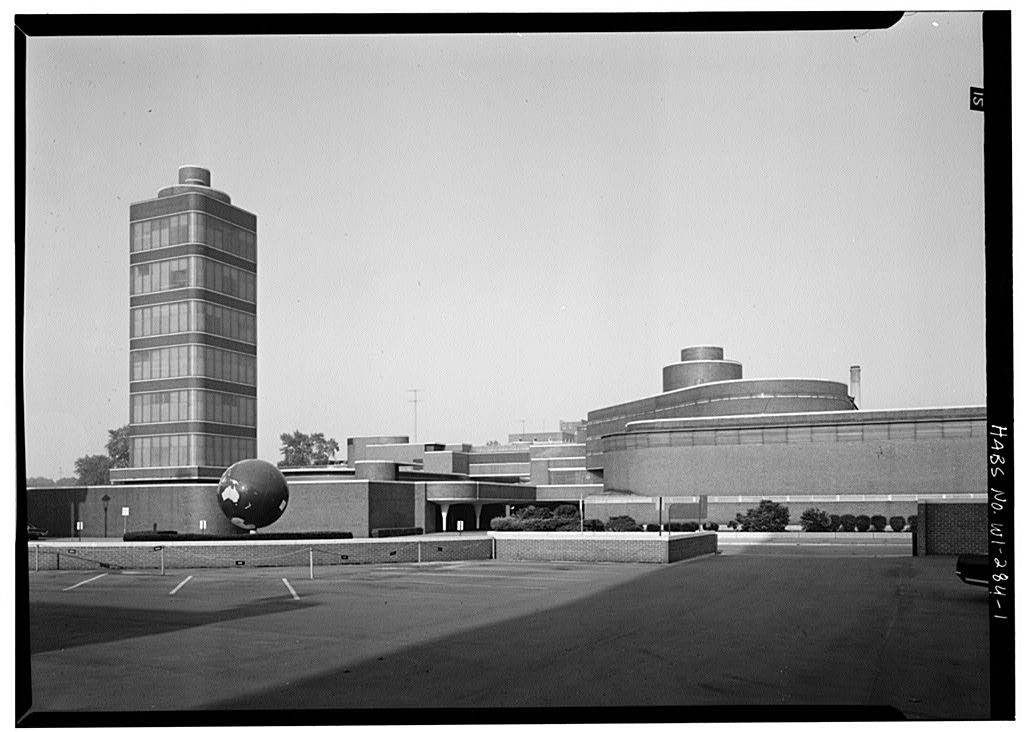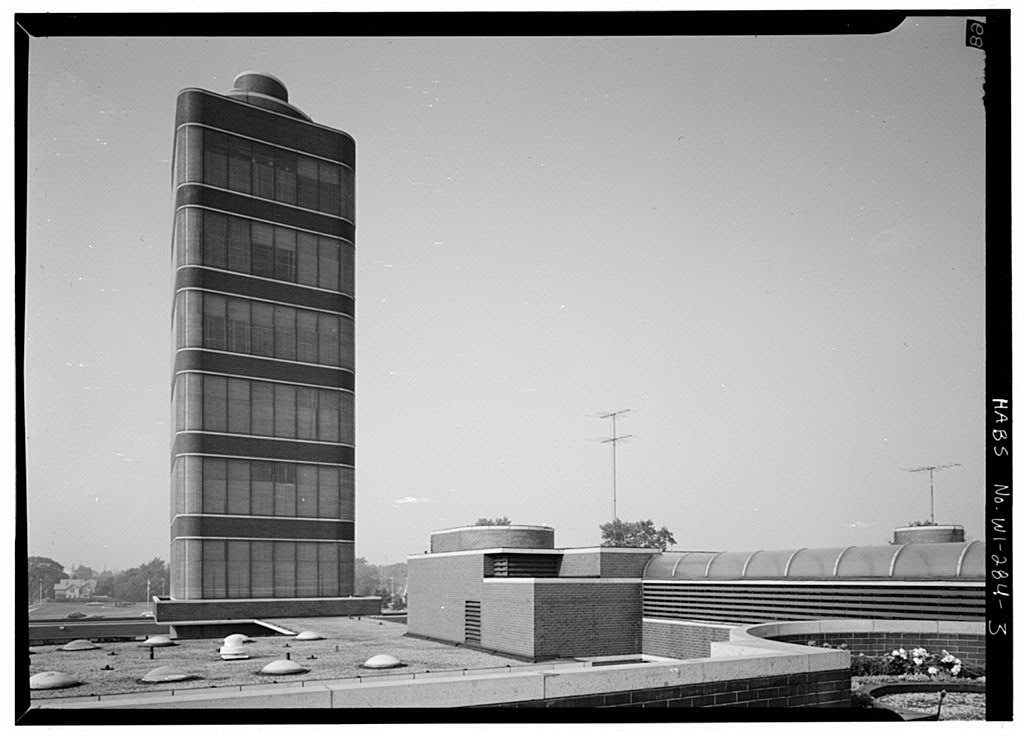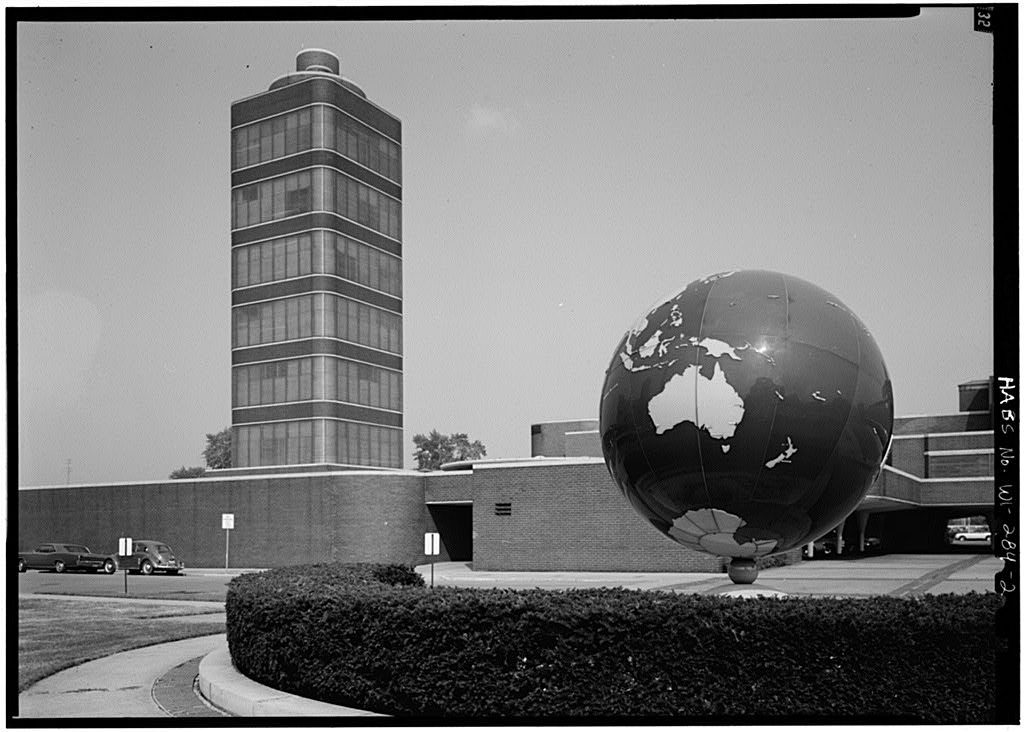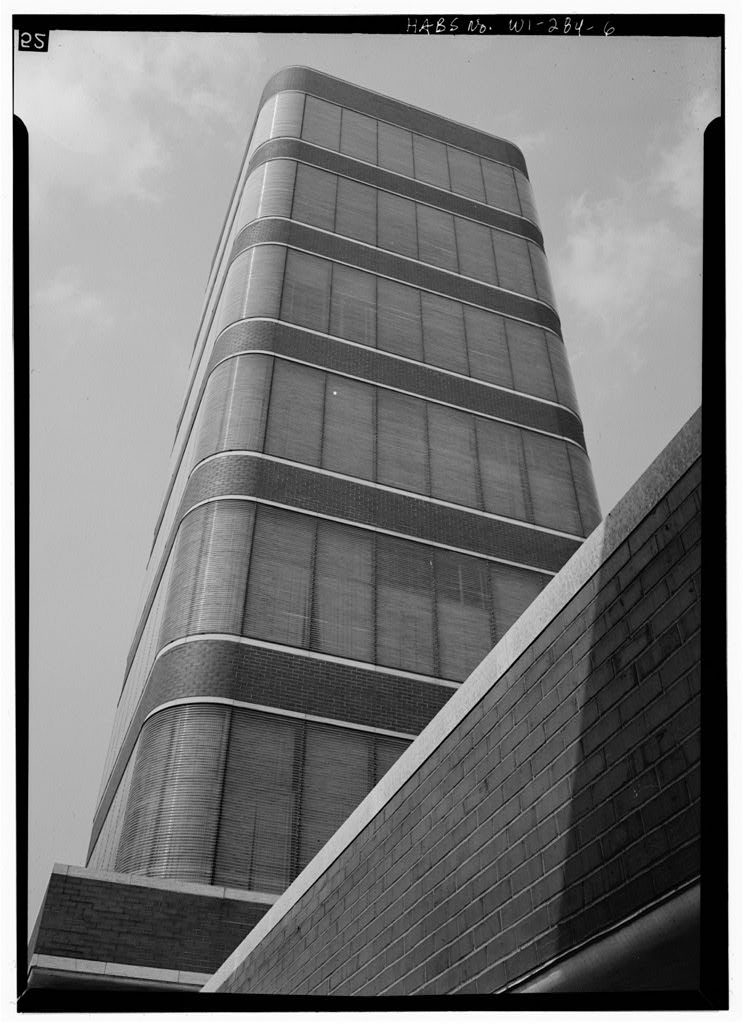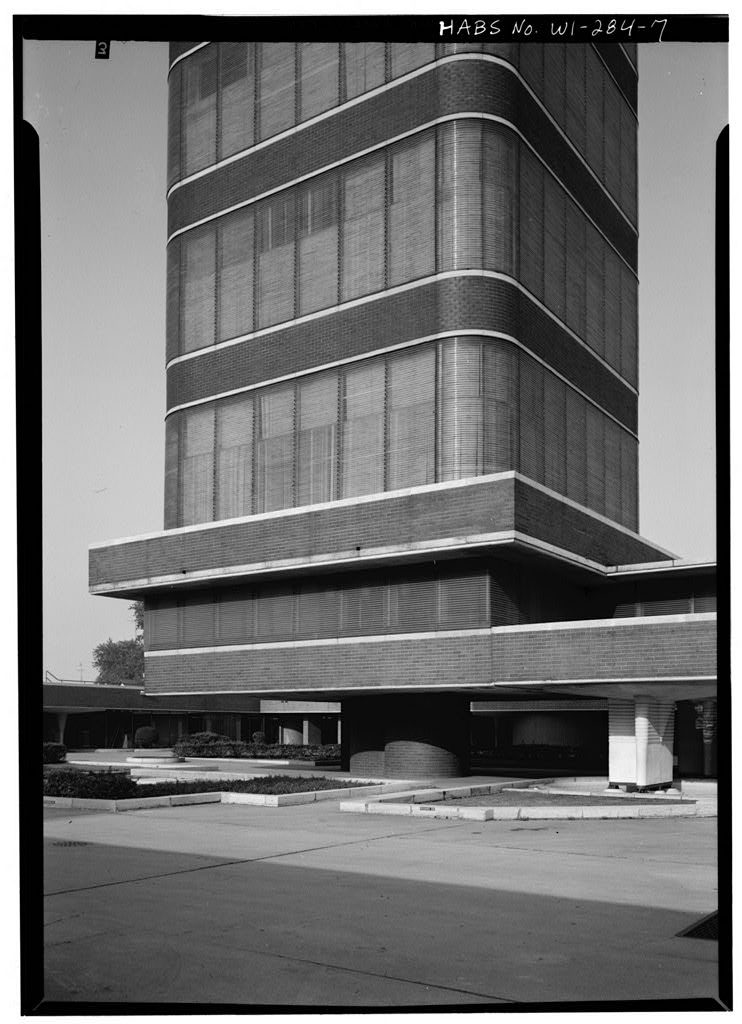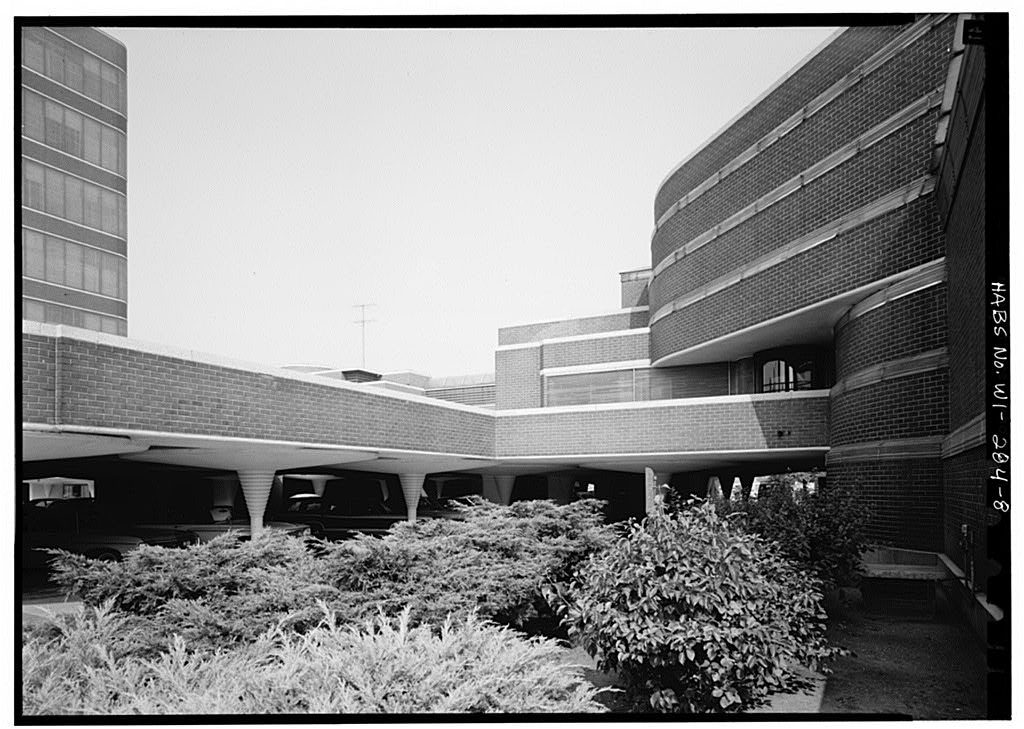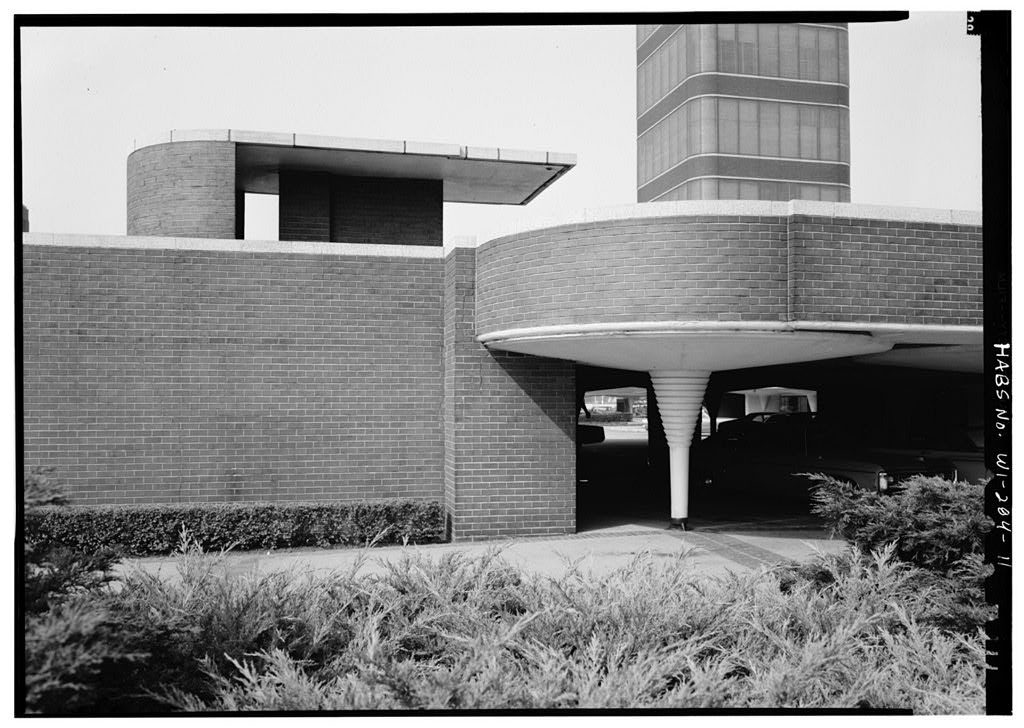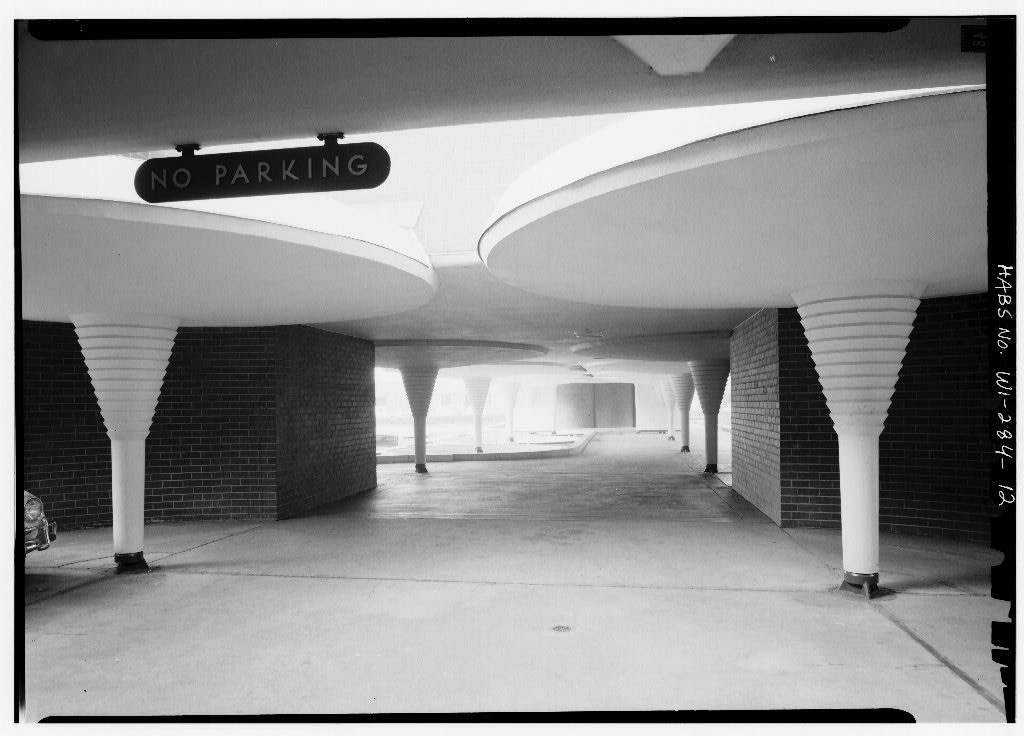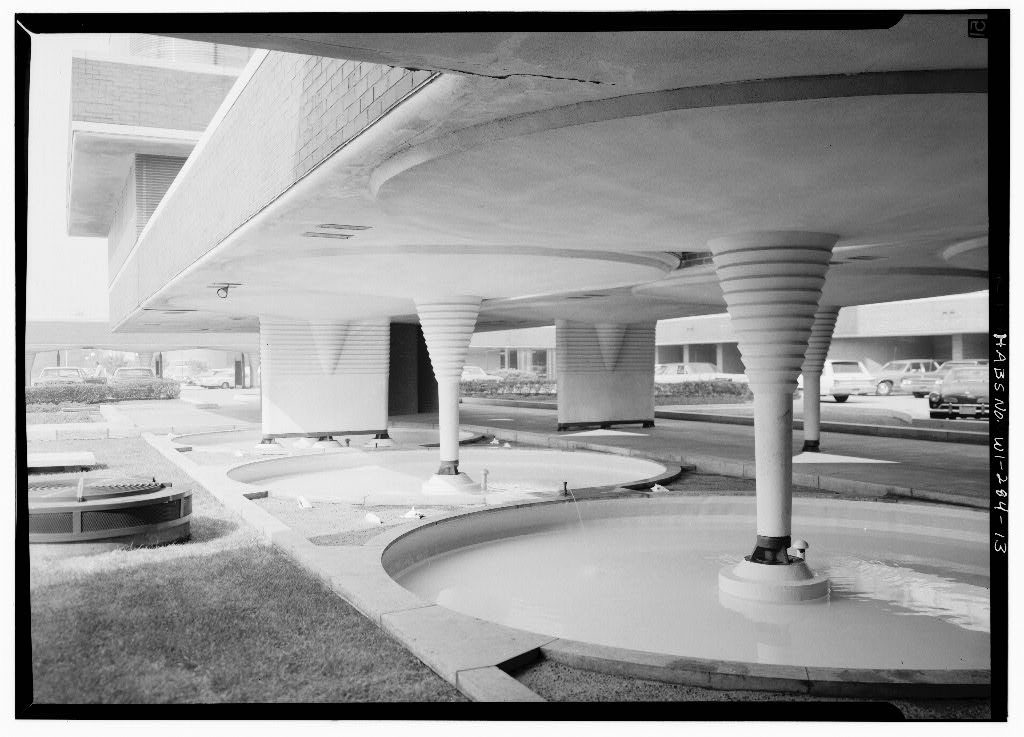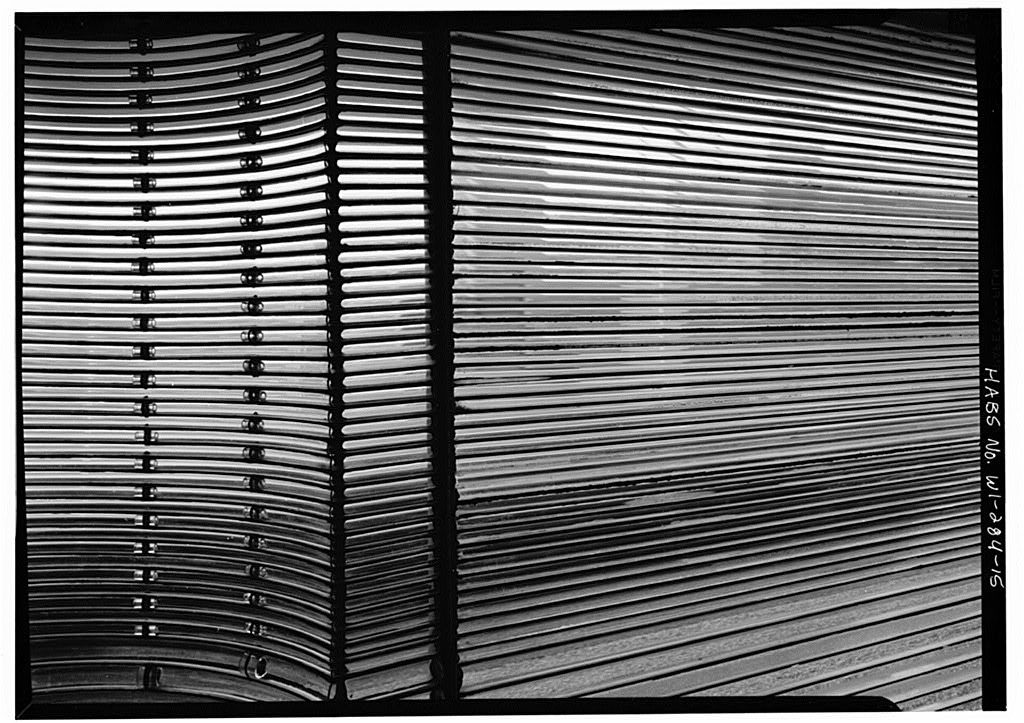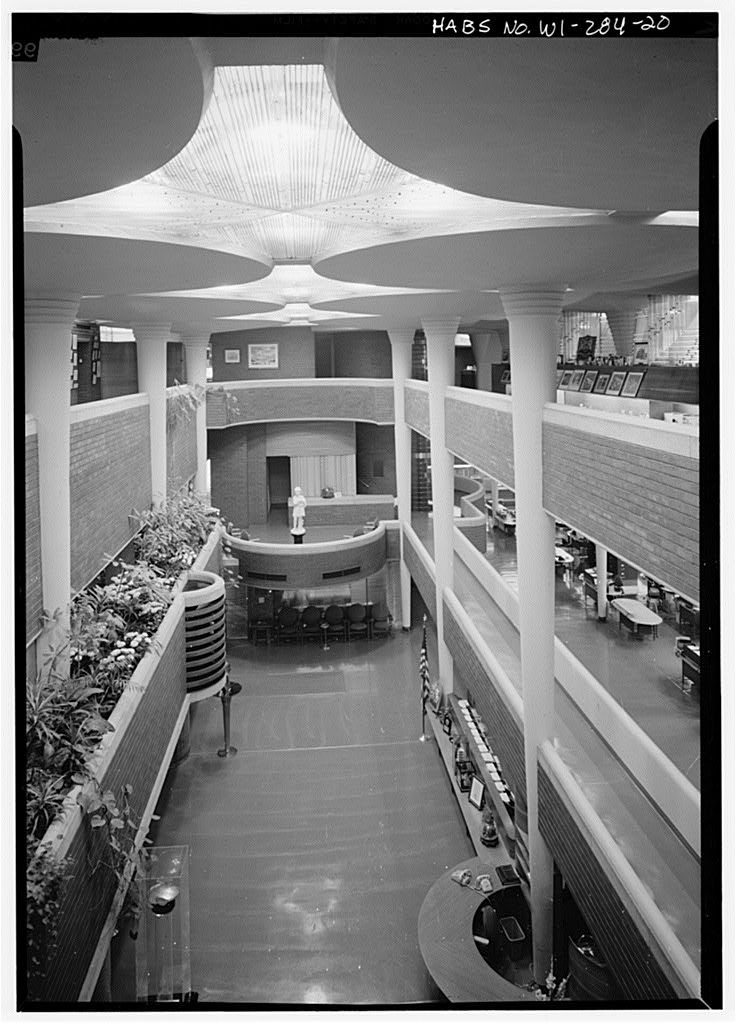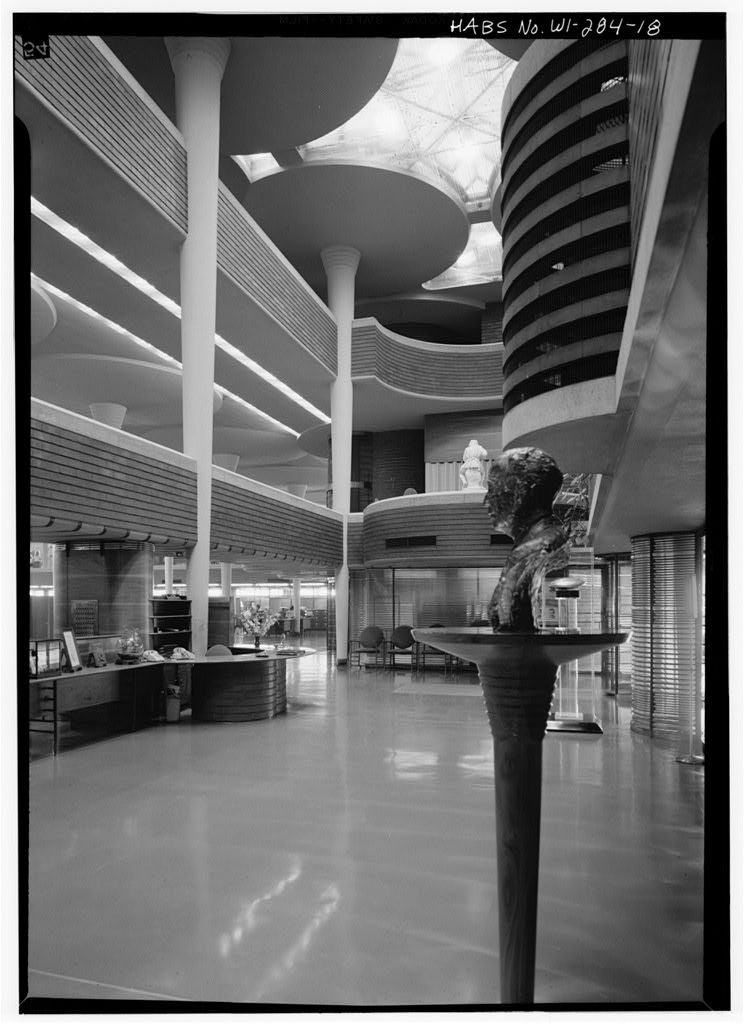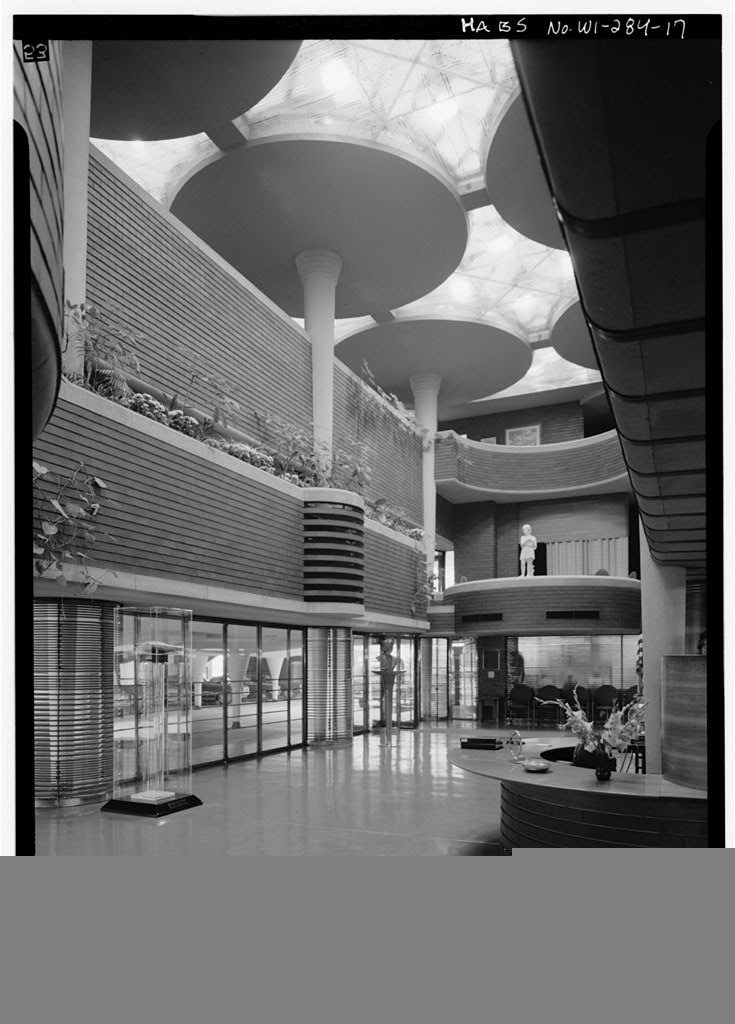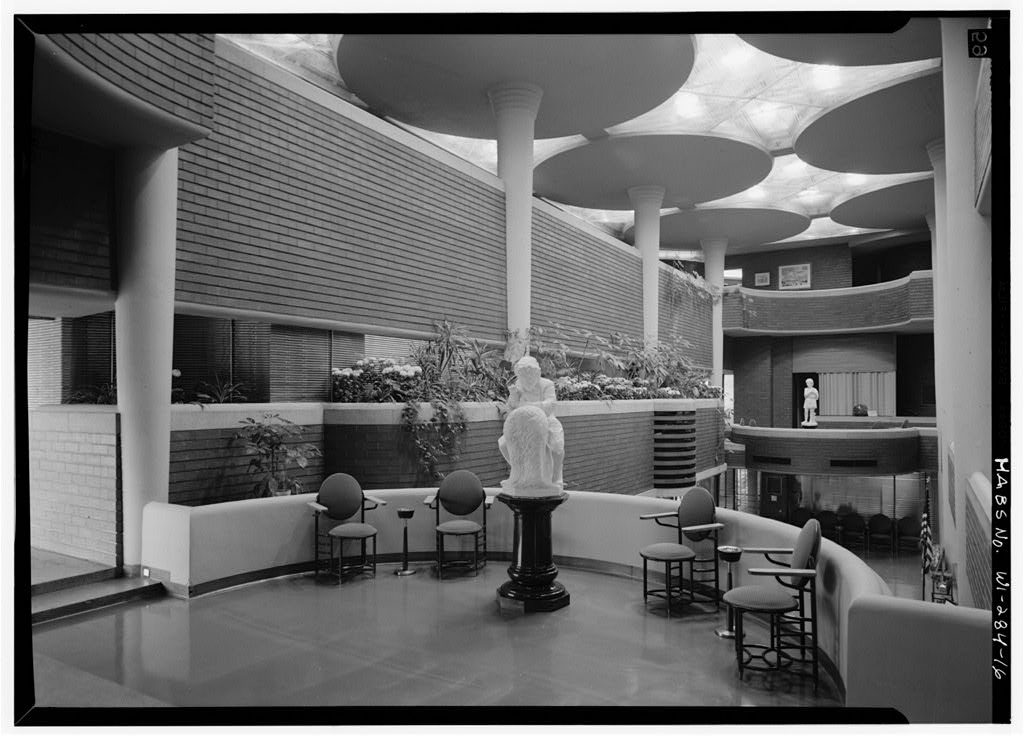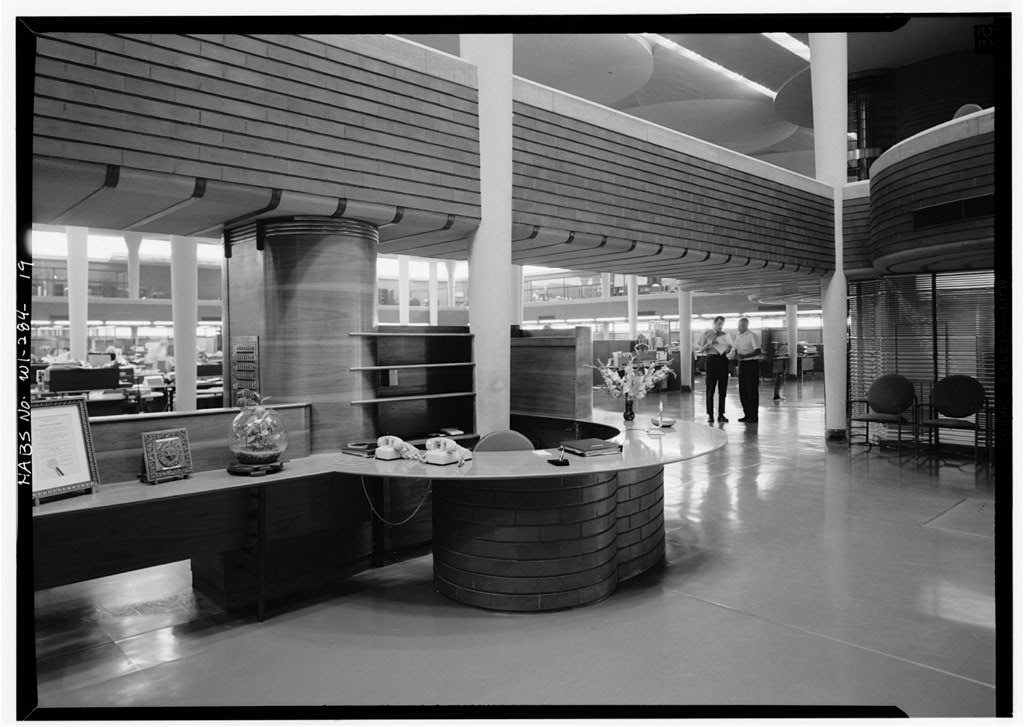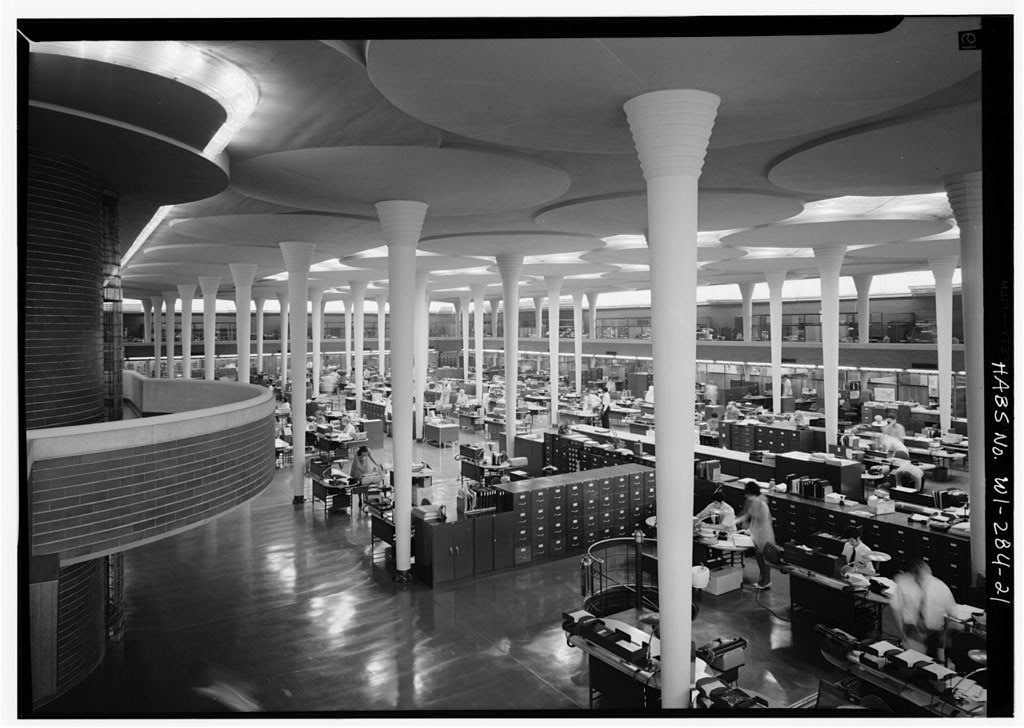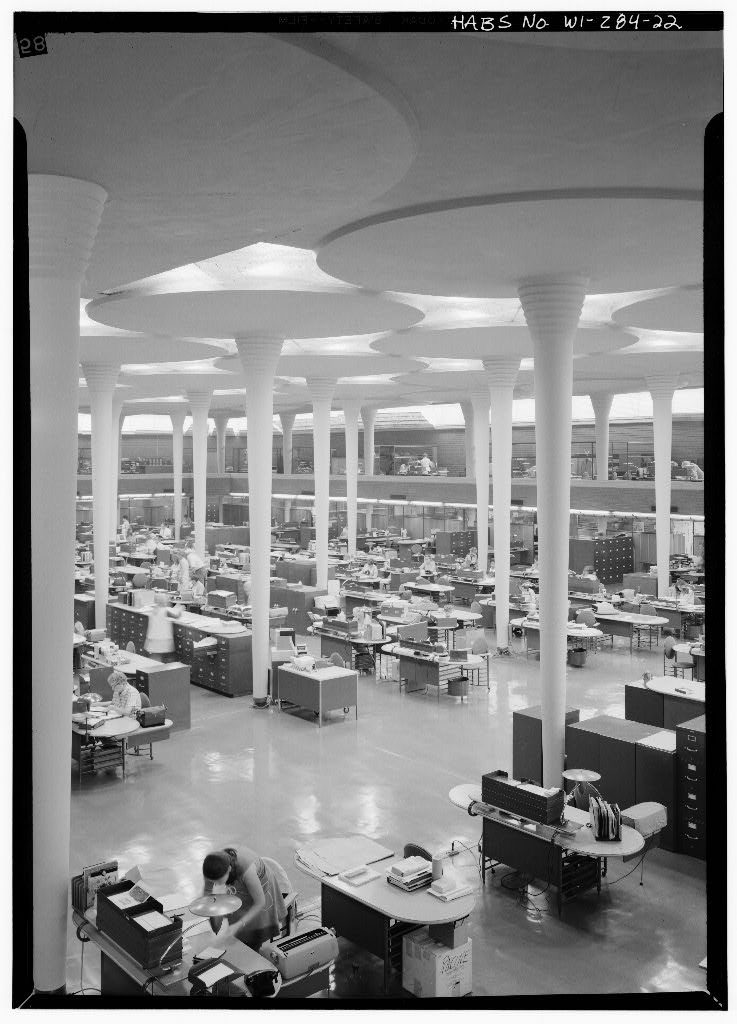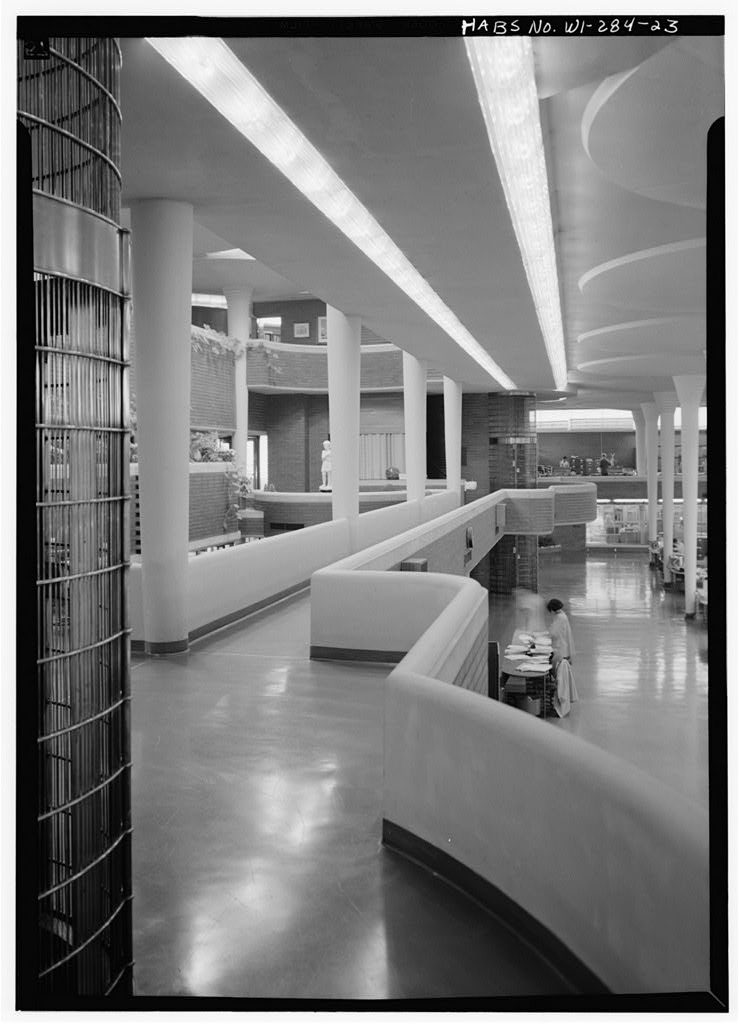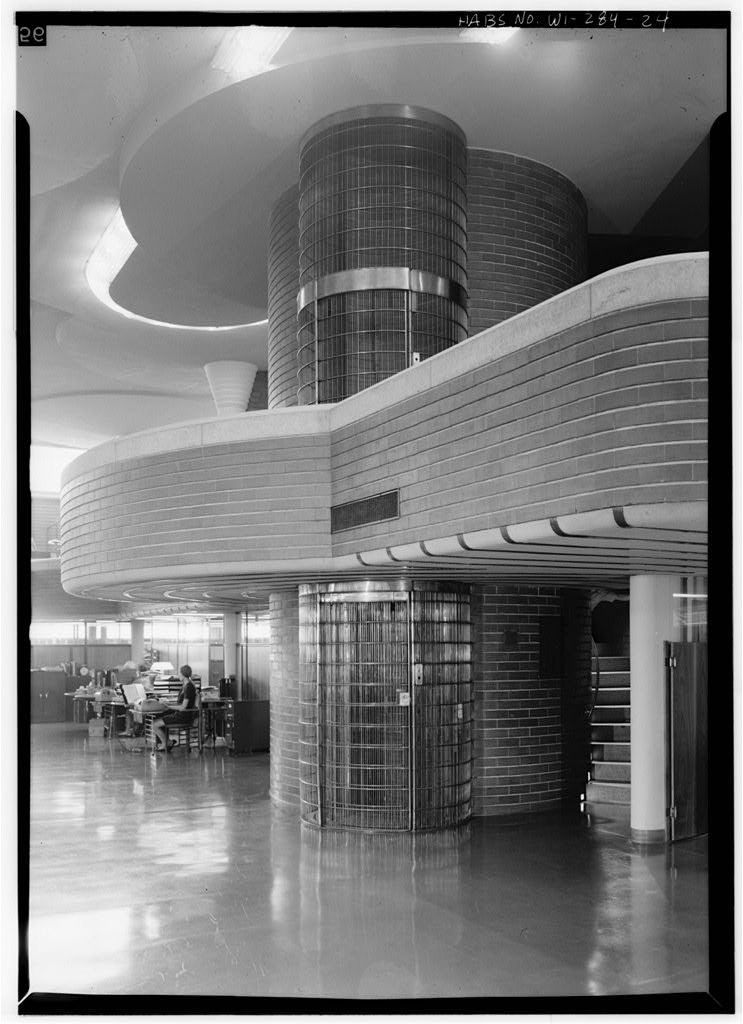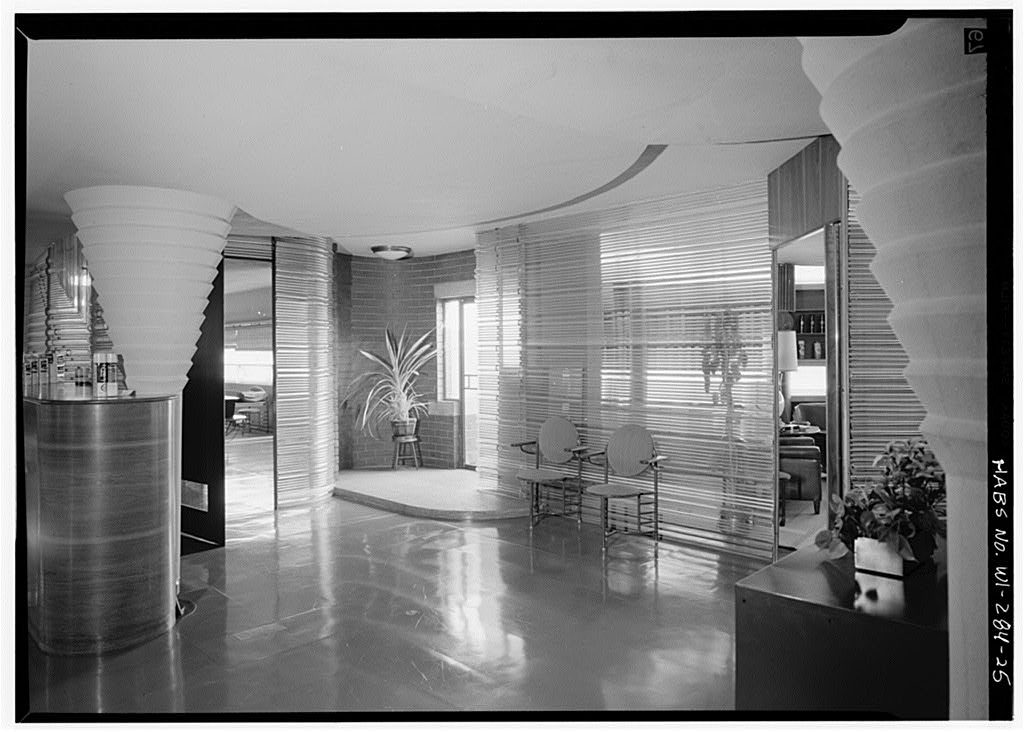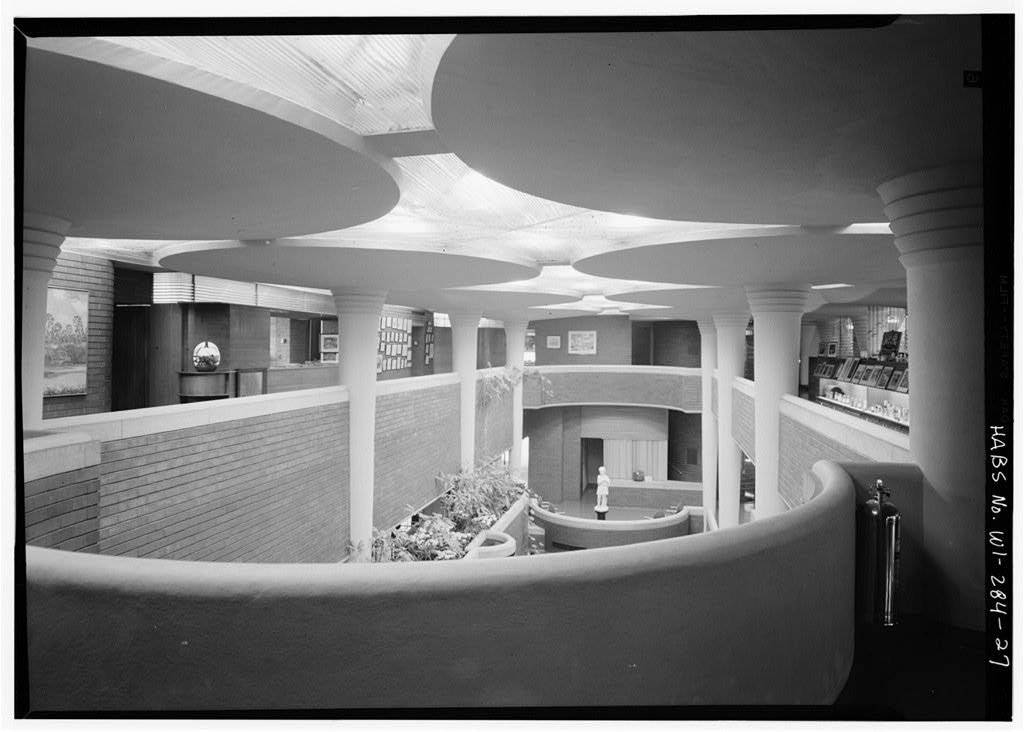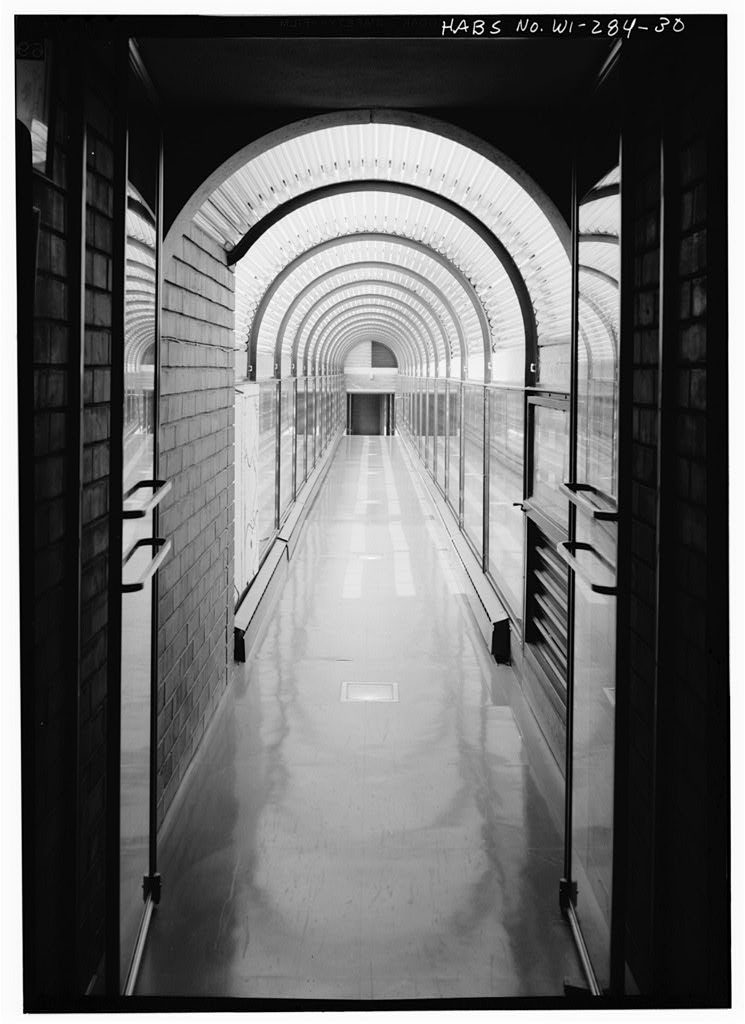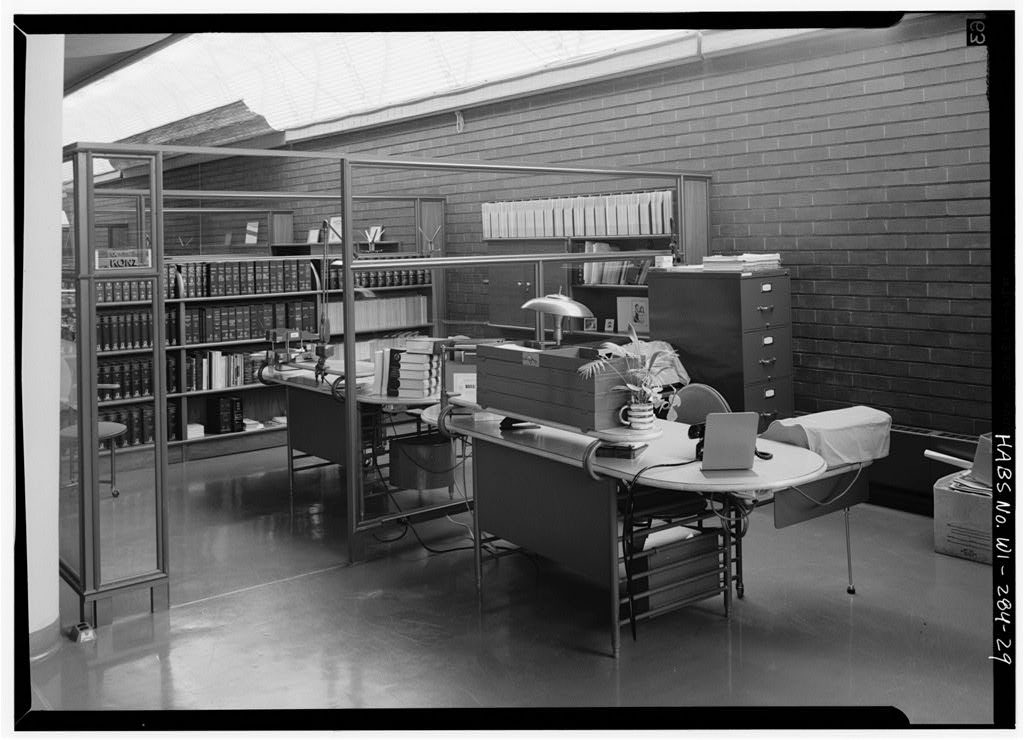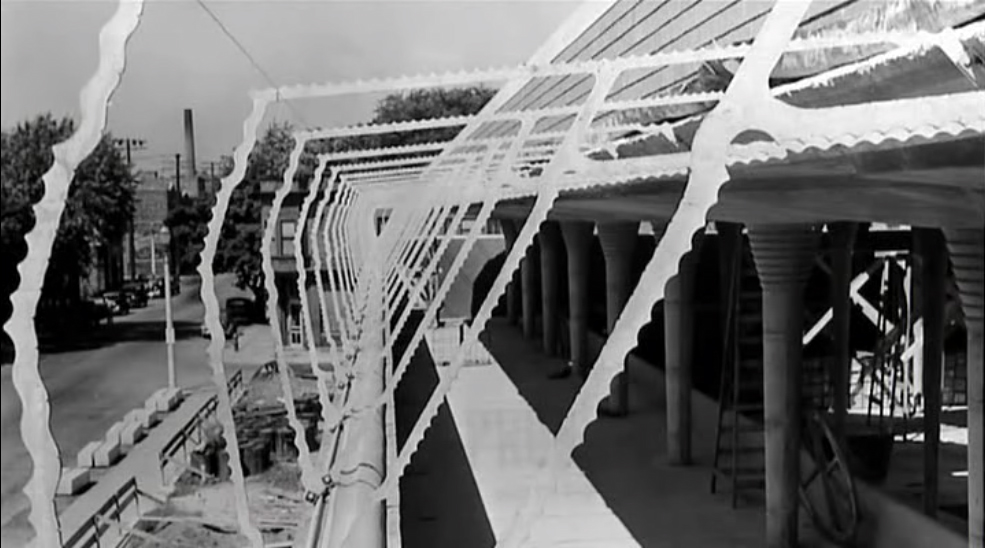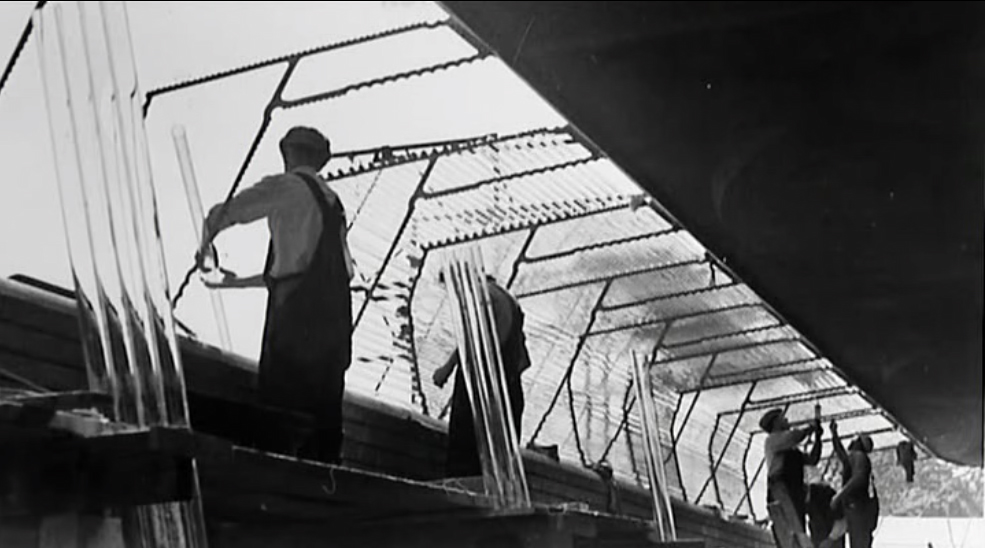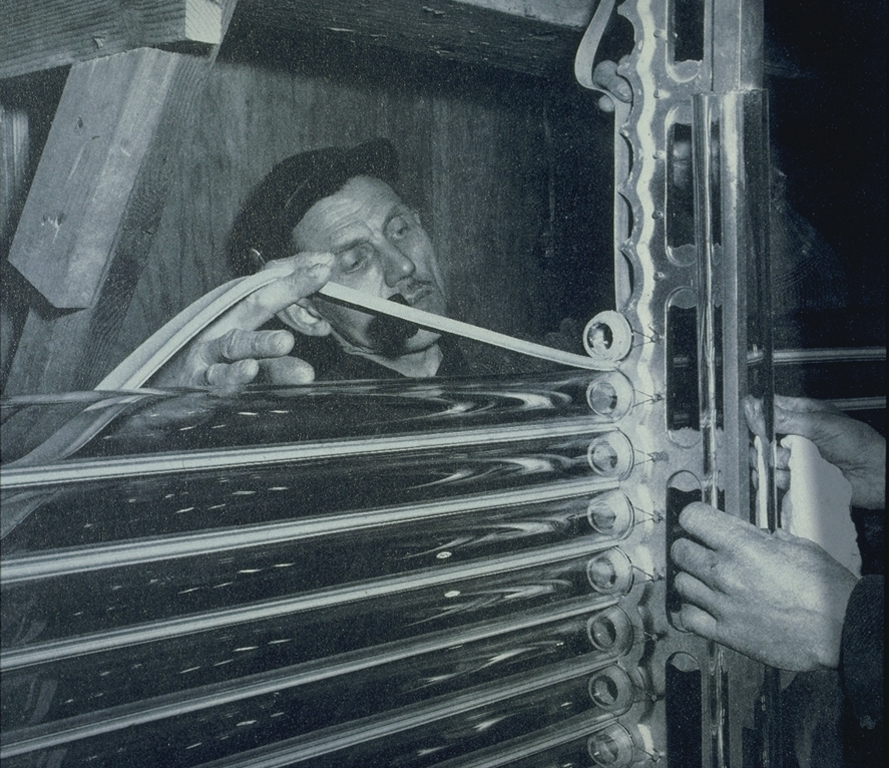Johnson Wax Building

Introduction
In 1935 Herbert “Hib” Johnson, the youngest of the Johnson family, he was 36 years and wanted to give his company a more modern family through the construction of new offices.
To carry out this work have sought the help of Wright, who at first refused to offer his services as he considered the site for the project entirely inadequate and did not give Hib Johnson to his proposal to create a small urban to put offices in a green area more distant from the city. It was Wright’s wife, Olgivanna Wright, who managed to convince him to accept, because even if Wright had his fame was in a very professional stage production, with very few actual orders and much intellectual work and research on urban issues, a situation which led him to once again be close to bankruptcy.
The company requested that Wright making his project interpreted the idea of the American dream, where the worker is happy in his job, is done professionally and personally, people relate with one another, are equal, united as one big family.
It appears that Wright was his goal since the years after Hib Johnson admitted that due to the reorganization of offices and the environment that was able to create your company’s performance had improved to 25%.
As in most constructs the final cost was higher than the initial budget, with the difference that here the estimates were multiplied nothing more nor nothing less than fourfold.
Location
The building is located in the town of Racine, Wisconsin, 200 miles from Chicago, on the shores of Lake Michigan.
The Environment
The neighborhood in which it is placed in the outskirts of Racine, an industrial zone that nothing but pleased with Wright in which the client insisted repeatedly that the building should be located.
Wright was forced to portray in an environment that he had nothing to offer, and left clear evidence of the building projecting it as if it were a fortress, with high brick walls blind entries daylight, spaces fold into themselves inwards, and so on. completely deny outside.
Concept
Deliberately denies the building environment, it closes itself as a fortress is isolated from its environment that allowed Wright to create his own idea of architecture walls inward, addressing the relationship of a hostile and unhealthy environment through outright denial. The building has no windows, only long blind facades, impressive red brick walls.
Wright designed a horizontal amount, contrary to the tall buildings that were so fashionable at the time. Wright to the horizontal line was the horizon, which is associated with the ground, and the only direction that could make the building belongs to the ground.
The resort has a vertical tower, but this does not belong to the original draft but was designed ten years later by Wright himself, and even vertical in this volume would make a horizontal line above all else. The tower is square-shaped interlayer plants with plants of a circular shape, with the latter reaching the perimeter of the building and therefore be visible in front only one out of two floors, creating the illusion that the building is much lower than it really is.
The building had become the icon, but Wright wanted to run away from that image typical of the era where a large company is identified with the entrance of a large building (usually a skyscraper) and therefore created a facade totally blind, bringing access to a discreet position on the side. Wright sought to achieve this action it was the image of the entire project which evoke people think Johnson & Sons, not just a few types of suit by entering a building with other anonymous as happened for example with firms Wall Street.
Already inside the building Wright promised his client would be a world apart, a forest outside what passed outside, where there would be no more noise than those generated by the forest and the natural light fall on a uniform from above, as if falling from the sky.
Light
Light played a major role throughout the project. Wright sought to reach the light in a uniform way to all corners, and two resources used to achieve this, undo the ledges and take the residual spaces between the circles that generated columns in the ceiling.
To achieve break the cornice Wright had to create two separate structures, the facades and the forged, leaving between them a break, a gap that would be covered by a cornice formed of glass Pyrex tubes placed on racks about triangulares metálicos.
Thus Wright weigh not only achieves natural light inside, but once again gets rid of the right angle and creates a kind of cornice never seen before, something that gives us an idea of how far considered its unique architecture, a New different style to what had been done before.
Within this glass cornice placed the installation of artificial light, seeking to reach the minimal differences in the level of illumination during the day and night. If during the day the light came from all directions in a uniform was the same thing happen during the night, should be avoided point sources of light, less suitable to illuminate the work.
To achieve uniformity of light in the interior also created a glass ceiling, based on the same Pyrex tubes, covering the residual spaces between the circles through which the columns are provided with forged.
In light of these entries was also necessary to give an internal volume to accommodate the installation of electric light, but as a cloudy day or a snowstorm would impossible working conditions in the main hall. These spaces are accessed from the plant cover, where skylights were set up to four water glass for easy access.
The tubes had to be replaced after some years but identical plexiglass tubes to solve some problems of sunstroke and especially vulnerable.
Spaces
Wright to the car in 1935 was undeniably a part of architecture, and therefore planned taking into account these machines from the start, deny them or leave them in a second plane would be absurd. That is why the Johnson Wax Building parking entrance is the only possible. Cars entering for a discreet entrance on the west side and penetrate to the center of the building, looking for its place in a parking lot of low ceilings supported by columns similar to those that give the interior appearance of a cave.
Pedestrians, if they had any in the world imagined futuristic Wright, they should use the same parking space to reach the main entrance of the building.
Once inside the building lobby is expanded, inviting contemplation of the space that lies ahead. And after that under a desk and a footbridge that crosses the site is the main hall, the cathedral’s work, a rectangle of 45×65 meters completely transparent, able to accommodate about 200 employees under one roof, without any partitioning or heavy or light. In this space everyone is equal, there are no restricted areas, all are free to move wherever they want, from the logistical to the department of legal affairs, from trade to the area of international sales. While working under the roof of Johnson & Sons all employees are equal, as Hib Johnson had asked Wright, an excellent interpretation of the American dream.
Management areas are located in a second floor, along a walkway around the main room and contemplates. This time the offices themselves are divided, but not lead to a hierarchy among the employees, but for practical and necessary to be able to bind simultaneously to various activities such as meetings, presentations, talks, etc.. To avoid doubt about the role of these divisions that Wright wanted to be glass, as though they were not compatible for activities performed in a single space these were not secret, no one should have more or less privacy than others, no could give rise to the belief that the work was less appreciated that one of the others.
This second plant is located is also a common place for all employees, an auditorium that is used in turn as the cafeteria or break room and on a small platform where you can give small speeches to employees.
A third floor, that it restricted access, houses a meeting room and private office Hib Johnson, which, in turn, with the only open space in the building, a small rooftop terrace.
The Tower
Ten years later the company was forced to expand their offices due to the operation of a business and Hib Johnson decided to call Wright to design a tower where it is located adjacent laboratories.
The tower is of simple shapes, a square extruded with rounded corners. The antepechos are of the same brick that the original building and the windows are all the same Pyrex tubes which were used in cornices and skylights, the first building.
Wright wanted to understand this tower as part of the package, he wanted both phases of the project were one, a bystander who passed through there without knowing the history knew no distinction between the two buildings. For that reason gave the new tower, a separate entrance but is placed within the existing building, ligándolos with one another so inescapable.
Structure
The building is held by 60 columns of 6.5 meters in height, with a base of only 22 cm which is expanding to reach the roof covering the whole surface.
This novel structure caused a lot of mistrust between the authorities, who not only asked for a thorough study of it but in turn requires a test with a real pillar model. Each pillar should be able to support 6 tons in weight, however, due to the skepticism that has generated this structure, the commission approved only if they were capable of withstanding twice.
On June 4, 1937 was the date set for the test. Column 6 tons, without problems, then 12, but Wright, offended by the distrust of the authorities ordered further adding weight to the pillar until it finally collapsed after bear 60 tons.
The columns are, in addition to the characteristic element of the project, a key to the design of the building, which not only give a spatial order, but are responsible for maintaining all facilities throughout the building.
The columns are in fact hollow, and inside the facilities of moving light, telephone and downspouts and stormwater devices.
To achieve such a small section of pillars at its base and hollow Wright devised a new system of reinforced concrete where the armor is no longer the typical round of steel but is replaced by a steel Maya, achieving significantly reduce the thickness.

